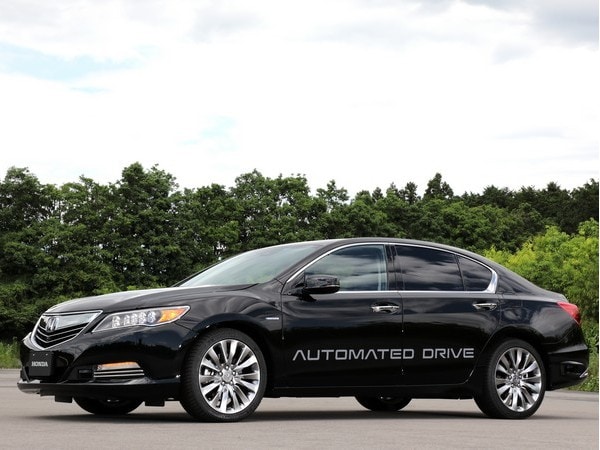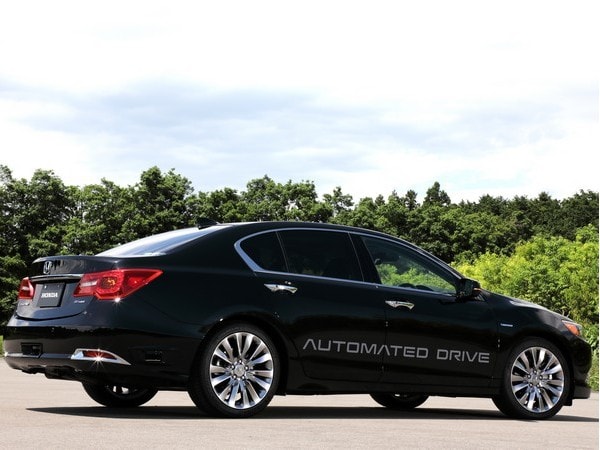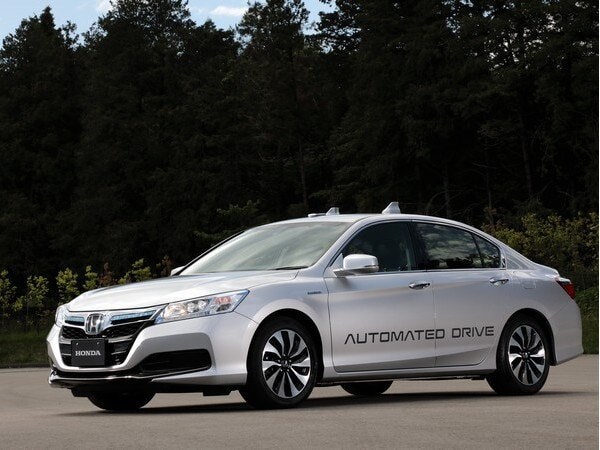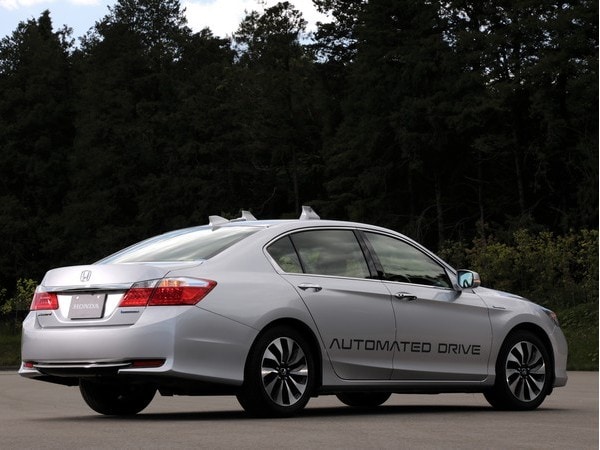Honda’s recent announcement that it would be offering some automated driving capability on its cars as early as 2020 and moving to a fully automated Level 4 system by 2025 is telling in that automakers are being goaded to go public with their plans or be viewed as hopelessly behind as the industry races towards self-driving cars.
In a way, this pressure is coming from Wall Street, where the investment community, looking beyond current sales, is already picking winners and losers based on tech acquisitions and partnerships rather than the actual hardware that’s being proposed. In this environment, a company like GM is viewed as a winner by forging a relationship with Lyft and creating Maven, while Ford’s failed Google partnership is cited as the reason the company’s board fired CEO Mark Fields.
In this environment, Honda raised the curtain slightly giving us an opportunity to sit behind the wheel of sedan that demonstrated a Level 3 system that could automatically merge, pass and blend into a stop-and-go commuting freeway pattern without human intervention. We were also able to experience a self-driving car in a surface street scenario where it was able to navigate from one point to another and back just using an array of cameras feeding an artificial intelligence algorithm with deep learning capability. The freeway driving demonstration used a vehicle equipped with multiple cameras, five LiDAR and five radar sensors.
This Level 3 capability is expected to be offered on Honda production vehicles as early as 2020, with the move to a true self-driving car by 2025.
Safety first
“We will strive to achieve the technological establishment of Level 4 automatic driving for personal car use around 2025” promised Honda president and CEO Takahiro Hachigo. “We are striving to provide our customers with a sense of confidence and trust by offering automated driving that will keep vehicles away from any dangerous situations and that will not make people around the vehicle feel unsafe.”
Much of this capability is being driven by the rapid deployment of driver assist features by all manufacturers that include automatic braking, adaptive cruise control, lane keeping, blind spot warning and collision mitigation. Honda’s particular brand is called Honda Sensing, which has been equipped on nearly a half-million Honda and Acura vehicles on U.S. roads today. Honda believes this technology is both a perceptual and technological bridge to the self-driving vehicle of tomorrow.
But as all automakers adopt this technology, and industry standards for the various stages of vehicle automation evolve, will self-driving cars become mere commodities providing mobility? What will be the key product differentiators that can give an automaker a competitive edge?
Conveyance vs. Experience
While automation can provide mobility to a wider range of people, especially to the elderly or infirm, Honda believes self-driving vehicles must offer a unique and enjoyable experience. Rather than treating riders like so much cargo being shuttled about—think of having a middle seat on a cramped airplane—Honda’s philosophy is to create unique vehicles that offer cabin space and outward visibility along with features designed specifically to make this form of mobility fun.
Hachigo said the Honda’s concept is first and foremost to provide customers with a sense of confidence and trust in self-driving vehicles. Part of building that bond is to provide smooth and natural driving characteristics, which will in turn, make the self-driving experience an inviting one. Putting the focus on the occupants and their experience first, rather than just concentrating on making the technology work and offering soulless “mobility solutions” is a break from what we’ve been hearing from various manufacturers in their approaches to this new technology.
In short, fun isn’t a word that’s been associated with self-driving cars; rather the emphasis to date has been on taking the drudgery out of the daily commute. Having a more innovative approach to this technology that makes people want to ride in these vehicles, rather than just being taken for a ride, very well could give makers like Honda an edge over the competition.











